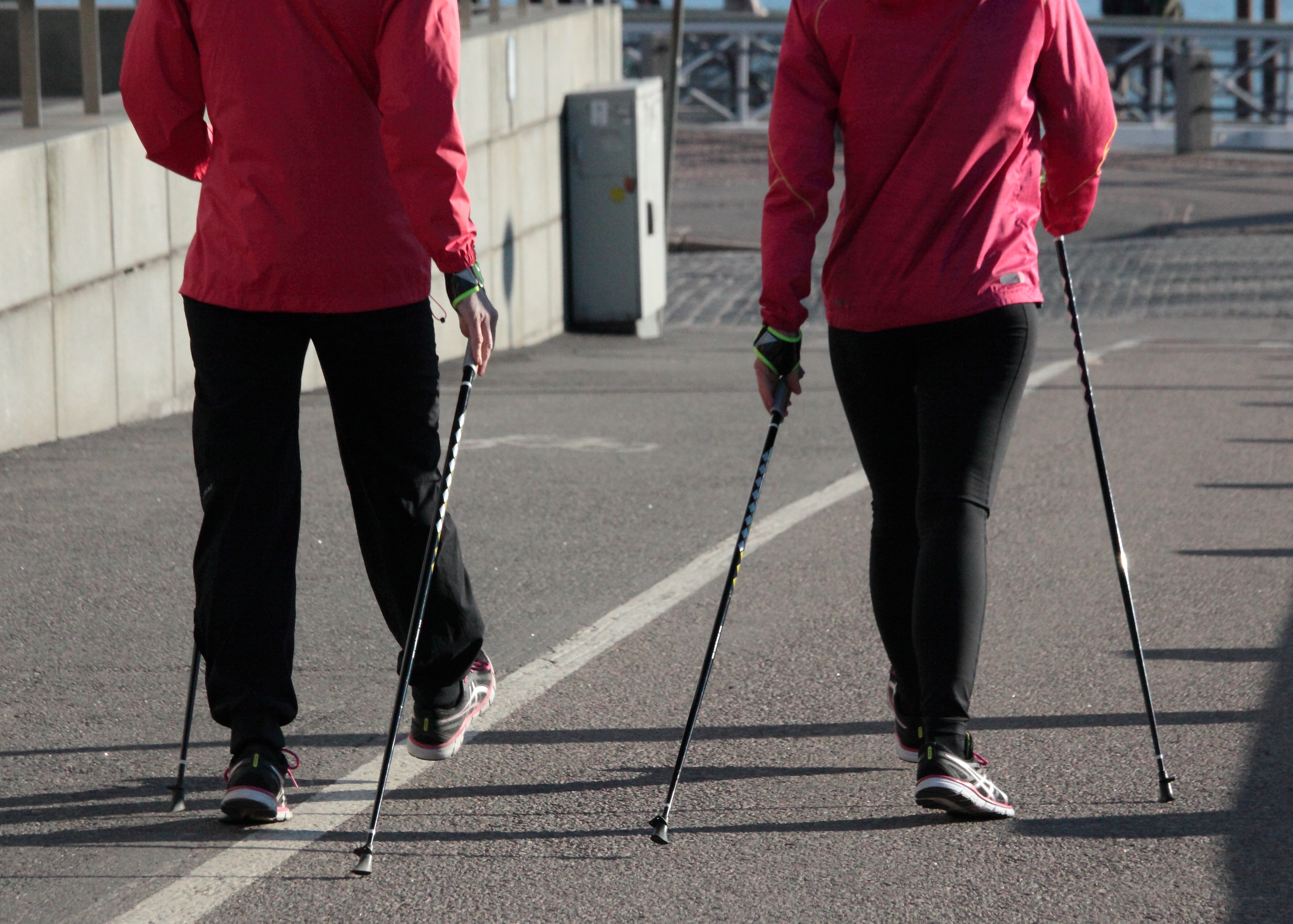

Are you heading off on a walking holiday and still uncertain if you should bring walking poles or not? These suggestions may help you make up your mind.

Walking with poles gives you more balance and reduce the stress by distributing the load across your body. This is particularly important when you are walking on uneven or slippery terrain, carrying a heavy pack or crossing streams. Your feet, legs, and back will thank you at the end of the day.
If you have ever walked uphill using walking poles you will know what I mean: the boost you can benefit from is tangible right from the start of the ascent. This happens because trekking poles redistribute the workload between legs and arms, improving your endurance significantly.
Many of you have probably experienced how painful can be walking downhill. The primary reason your knees hurt is that they are obliged to absorb the impact both of your body weight and of the descent and this can be extremely stressful for them. Using poles prevent from feeling pain by taking the weight off your lower body and providing good anchor points to balance. What is more, you will be faster downhill.
Hiking with poles will guarantee a more intense upper body workout as moving your arms back and forth will help you burn more calories.
Have you ever thought about using trekking poles for pitching a shelter? If not, you should consider the possibility to use them instead of dedicated tent poles and save precious weight (and space) in your backpack.
 How to use them?
How to use them?Trekking poles should always be used in pairs. The ideal movement involves the alternate combination of legs and arms, then right leg and left stick, left leg and right stick, and so on. When walking on flat or uphill terrain, poles should be kept slightly inclined forward so as to exploit the thrust and reduce the effort. While descending, you should hold poles ahead of your feet to unload weight on arms.
As a general rule, the rod of the sticks should be placed so as to position the forearm parallel to the ground, and bent at the elbow.
Price varies according to different features, but it is mostly determined by the material poles are made of. Cheap pole sets can cost as little as 10 Euros while expensive models can run 100 Euros or more. A sweet spot is a medium price range, which usually means lightweight, easily adjustable and durable.
Have you already found your ideal trekking poles? Then you're ready to choose your next journey!
 |
Scritto da Chiara |